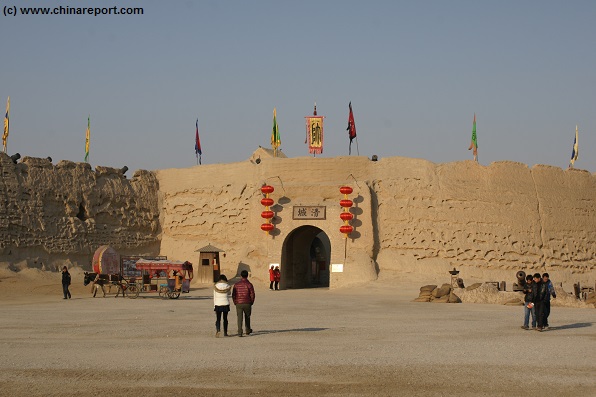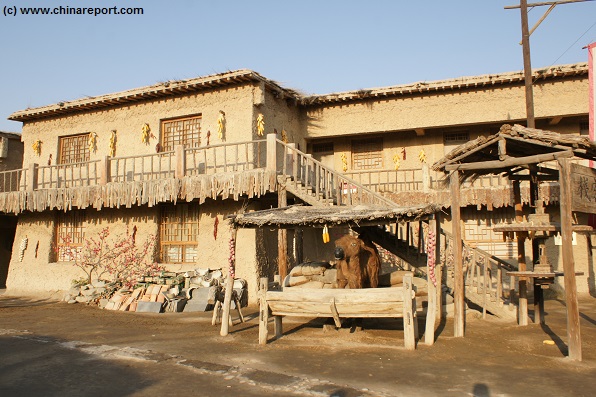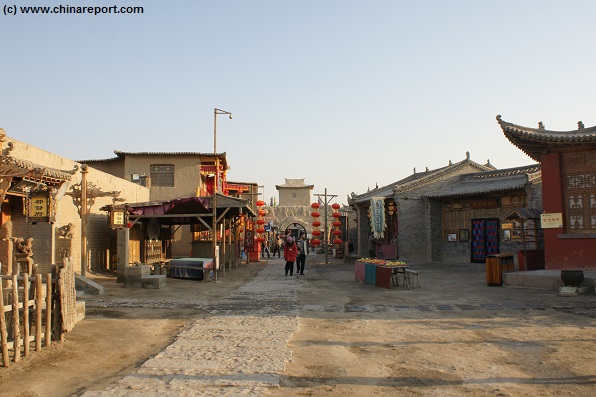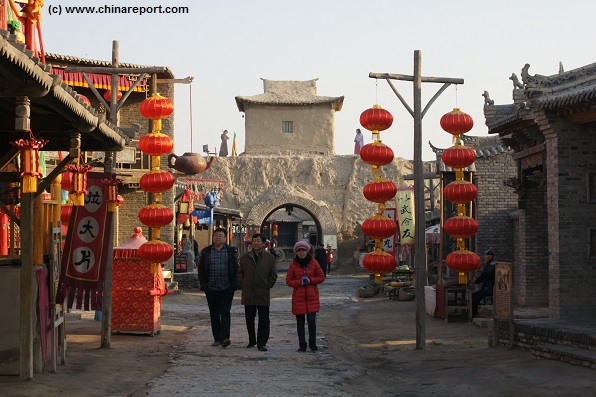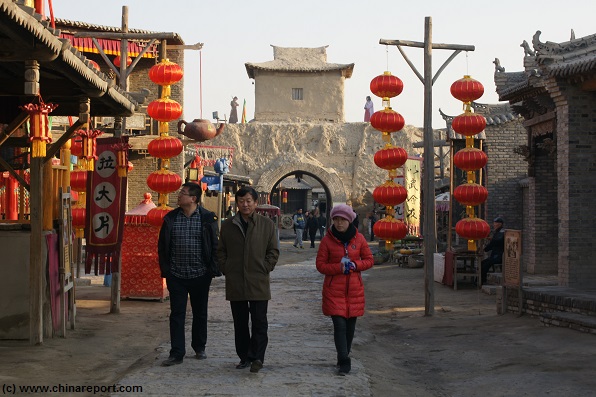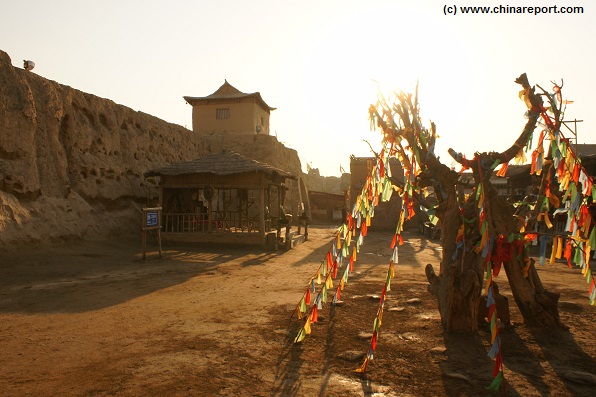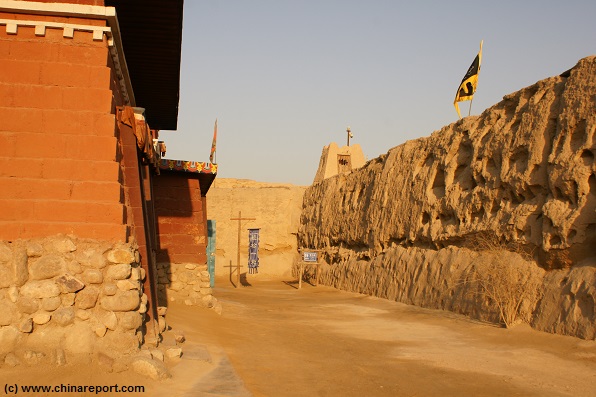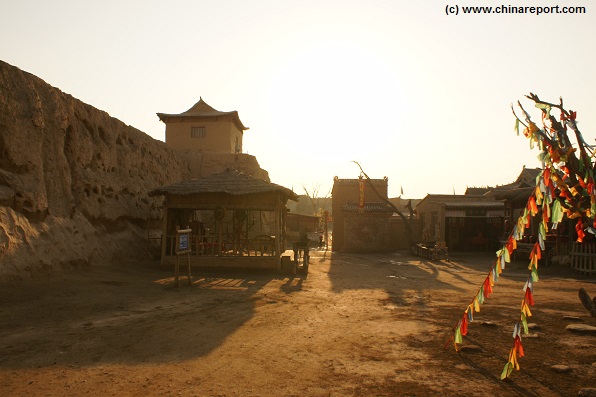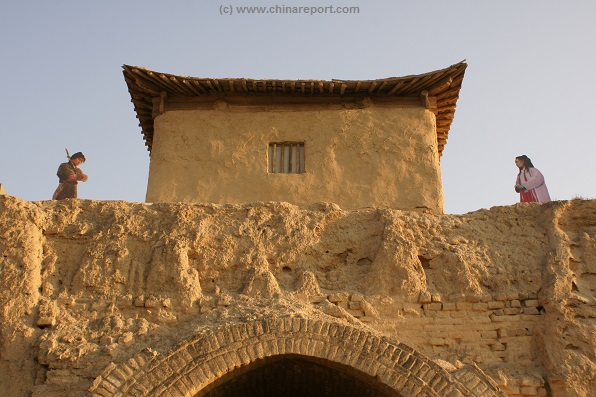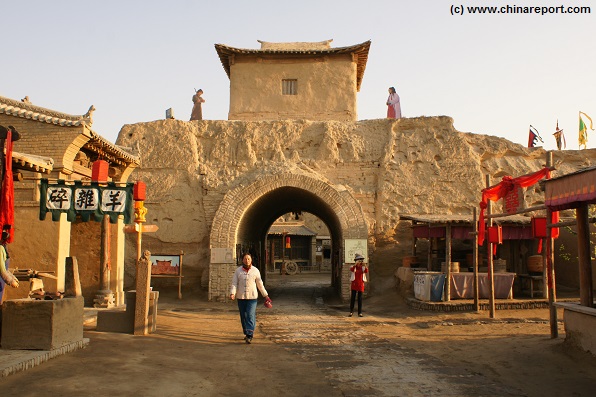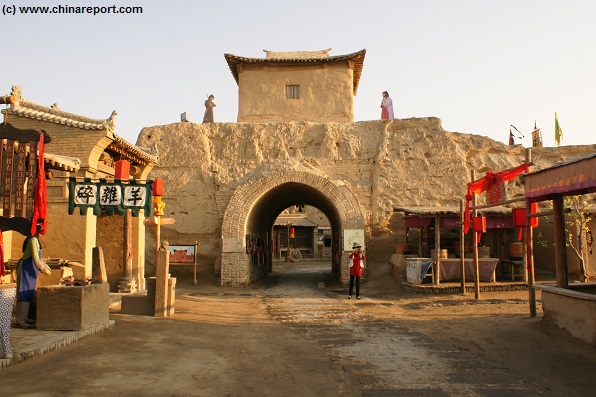A imitation Tibetan styled building including prayer flags is a prominent feature in the interior of the Fortress. Obviously not an original building it is part of the nationwide rive for re-writing history and teaching false idea's about the origins of the multi-ethnic eoples Republic of China. Although seemingly out of place inside a military type fortress, the connection to Tibet and its culture is not all that far fetched. For instance, the 10th and 11th century Kingdom of the Tangut People was influenced as much by TIbetan and Mongolian Cultures as it was by Han Chinese Culture. Subsequently, during the Mongolian Empire the Ningxia Region was populated by Musims rather than by any Chinese. It became the lan of a 1000 mosques (and a few Buddhist Moasteries). Altogether, Ningxia holds the middle between three if not four distinct cultures, the Chinese Culture not having been prominent until at least 1949, the year of the advent of the Communist Peoples Republic of China.
mmediately across the parading ground and central area visitors come upon the historic main gate of the Fortress of Zhenbeibu Although some restaurations appear to have been done, most of its is original work dating from times during the Qing Dynasty when the fortress was still an active base for soldiers stationed there to prevent robberies along the main trade routes in the wider regions.
